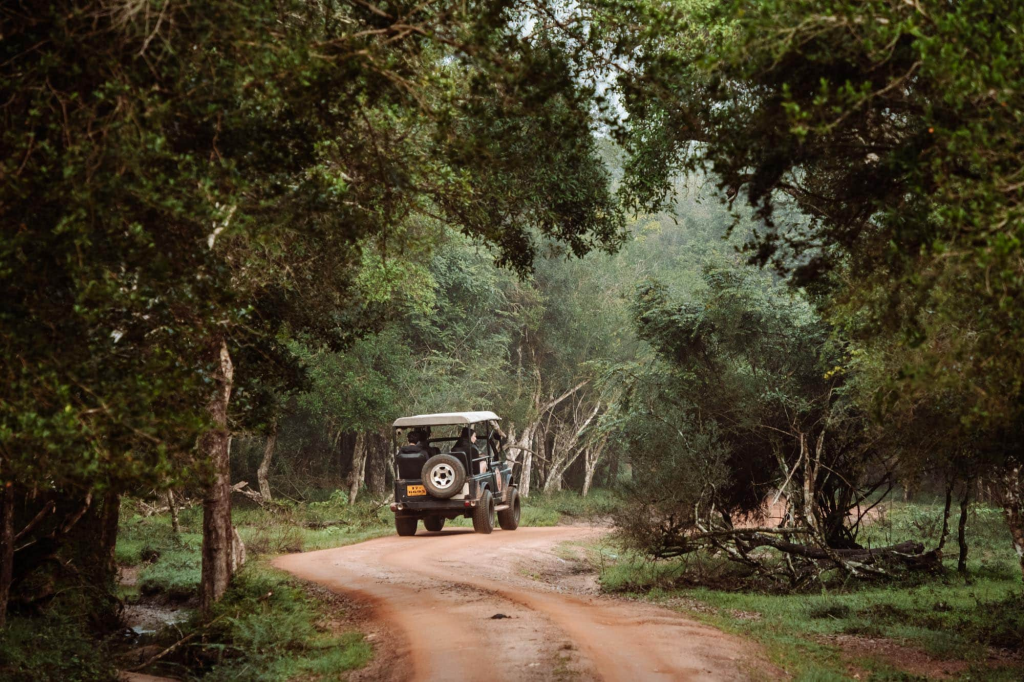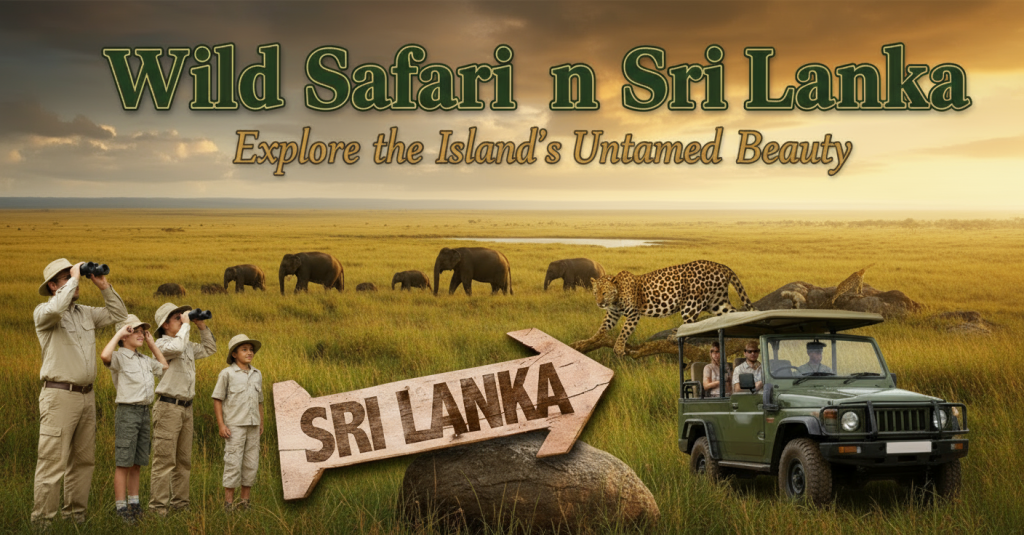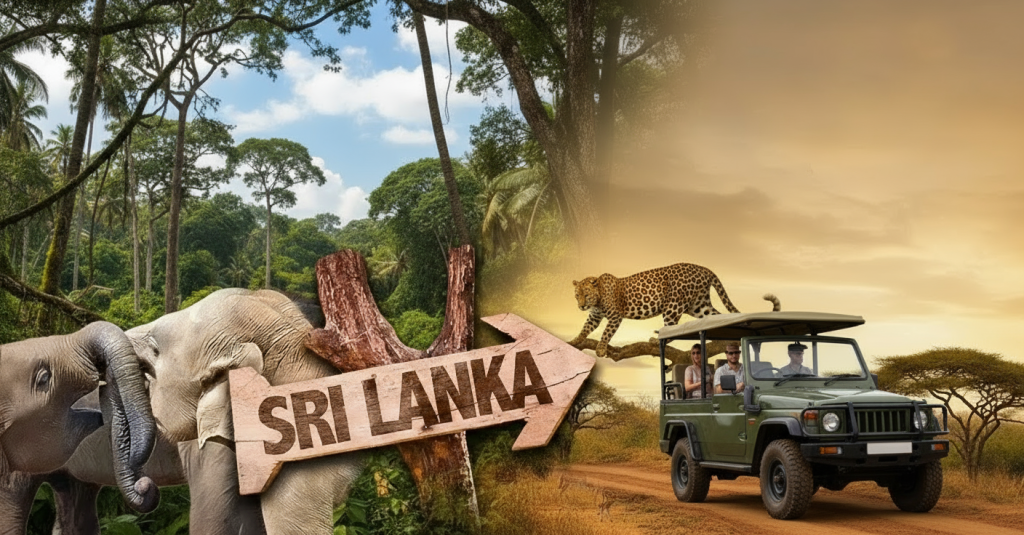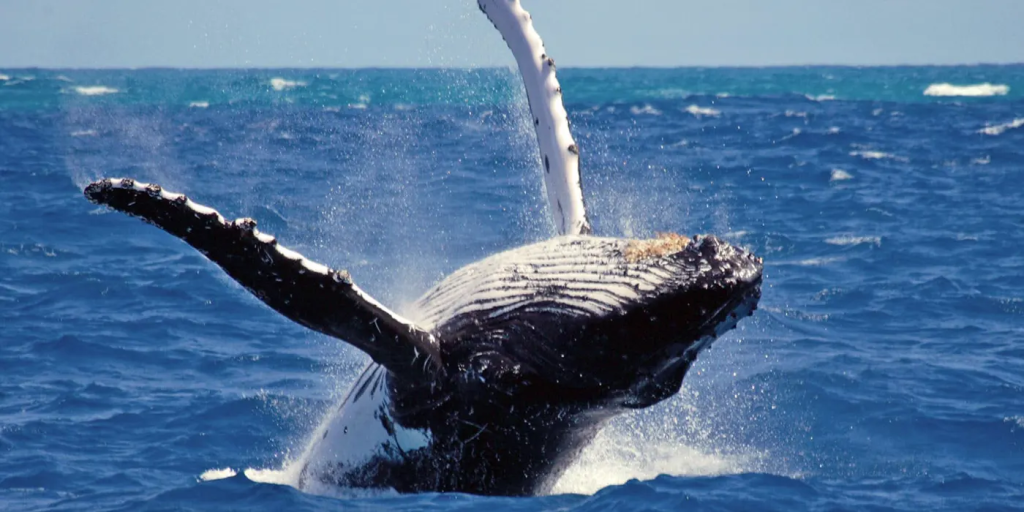Sri Lanka Wildlife Safari: Top 5 Ultimate Spots to See Wildlife!
1. Introduction: Unlocking the Ultimate Sri Lanka Wildlife Safari Welcome to the ultimate guide for planning your Sri Lanka Wildlife Safari! Forget complex logistics and seasonal confusion. This island is a powerhouse of biodiversity, offering the closest example of an African-style safari outside of that continent. In Sri Lanka, your safari list can include the largest land animal (Elephant), the world’s highest density of a major predator (Leopard), and the world’s largest creature (Blue Whale). To achieve the Best Safari in Sri Lanka, you need expert knowledge on where to go and when. This guide cuts straight to the chase, revealing the Top 5 Ultimate Spots that guarantee incredible sightings of Leopards Elephants & More, ensuring you don’t waste a moment of your trip. 2. Spot 1: Yala National Park – The Reign of the Leopard Yala National Park is the undisputed champion for big cat sightings and often tops the list of places for a Sri Lanka Wildlife Safari. Its dry, rocky terrain makes it ideal for viewing the elusive apex predator. 2.1 Why Yala Tops the Best Safari in Sri Lanka List Yala’s fame is well-earned. The park’s density of leopards is unmatched globally, offering the highest statistical probability of a successful sighting. 3. Spot 2: Udawalawe National Park – Guaranteed Elephant Thrills Udawalawe is often referred to as Sri Lanka’s ‘Little Africa’ due to its expansive, open grasslands. For visitors prioritizing guaranteed sightings of large herds of elephants, this park offers the Best Safari in Sri Lanka. 3.1 Udawalawe: The Sri Lanka Elephant Safari Champion Udawalawe National Park is home to a resident population of over 500 elephants. The flat, open landscape ensures incredibly high visibility, making sightings predictable and easy—perfect for families and first-time safari-goers. To guarantee comfortable, ethical viewing in Udawalawe, always book a private safari sri lanka . 4. Spot 3: Minneriya/Kaudulla – The Seasonal Giant Gathering Located in the Cultural Triangle, these interconnected parks are home to the incredible phenomenon known as “The Gathering”—the largest seasonal congregation of Asian Elephants in the world. 4.1 Timing the Best Safari in Sri Lanka for Elephant Migration The Best Time for Safari in Sri Lanka for this unique experience is between July and October. 5. Spot 4: Wilpattu National Park – Solitude and Rare Sightings For travelers seeking a tranquil, less crowded experience, the Wilpattu National Park Safari is the ultimate choice. As Sri Lanka’s largest park, it offers quiet exploration and rewards patient viewers. 5.1 Why Wilpattu is the Sri Lanka Wildlife Safari for Experts While Wilpattu has a healthy leopard population, its major draw is the serenity. The unique landscape of natural lakes (villus) attracts diverse wildlife and separates the visitors, ensuring solitude. 6. Spot 5: Mirissa – The Marine Big Game No Sri Lanka Wildlife Safari is complete without meeting the giants of the sea. Mirissa, located on the South Coast, is one of the world’s best spots for seeing Blue Whales. 6.1 Adding Whales to Your Sri Lanka Wildlife Safari The consistent presence of krill off the continental shelf near Mirissa makes Blue Whales a reliable sighting during the season (November to April). For details on proper conservation etiquette when viewing marine life, always check the Wildlife and Nature Protection Society (WNPS) guidelines . 7. Booking Your Best Safari in Sri Lanka Experience To ensure your Sri Lanka Wildlife Safari is truly ultimate, you must move from planning to action. 7.1 The Power of Choosing Wildlife Tours Sri Lanka Experts The best safari in sri lanka is secured when you choose an operator who is transparent, ethical, and experienced in dynamic park movements. 7.2 The Smart Booking Choice Don’t leave your experience to chance or trust an unreliable service. Secure your place with experts who promise the best safari in sri lanka. Ready to secure your adventure? Find the Best Safari in Sri Lanka and Book Sri Lanka Safari Online today! 8. Frequently Asked Questions (FAQ) Q: Which park is Best Safari in Sri Lanka for families? A: Udawalawe National Park is generally the best for families, as the open terrain offers near-guaranteed elephant sightings, keeping younger travelers constantly engaged. Q: Can I visit Yala or Udawalawe year-round? A: Yes. Sri Lanka Wildlife Safari parks are open year-round, although Yala typically closes for a few weeks (usually September/October) for rejuvenation. We always advise checking our seasonal guide for the best time for safari in sri lanka before booking. Q: Why should I book a private safari sri lanka? A: A private safari sri lanka guarantees comfort, allows for flexibility, and, most critically, allows your tracker to pursue sightings without having to consult other passengers, increasing your odds of seeing Leopards Elephants & More. This is essential in high-stakes parks like Yala. Q: Are there any leopards in Udawalawe? A: Yes, there are leopards in Udawalawe, but sightings are extremely rare due to the open terrain and dense grass, which offers them excellent camouflage. If a sri lanka leopard safari is your goal, Yala or Wilpattu are the preferred spots. Q: How long should my safari be? A: We recommend a minimum of a half-day (3–4 hours) for any park. If you are tracking the rare sloth bear or leopard, a full-day or our [2 day safari sri lanka] package is strongly advised. 9. Conclusion: Your Wildlife Adventure Awaits The Sri Lanka Wildlife Safari offers a diverse, exhilarating, and deeply rewarding experience. By choosing the Top 5 Ultimate Spots that match your personal goals—be it the leopard of Yala or the solitude of a Wilpattu National Park Safari—you guarantee a memory that will last a lifetime. Don’t settle for crowded views. Choose the Best Safari in Sri Lanka experience tailored by experts. Ready to secure your ultimate adventure? Book Sri Lanka Safari Online and start planning your perfect wildlife itinerary today!










